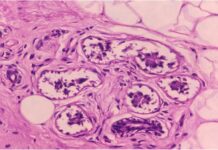Ended soon

The United States Food and Drug Administration (FDA) has approved the sale of the leading version of naloxone without a prescription. The move has set the overdose-reversing drug on course to become the first opioid treatment drug to be sold over the counter.
Gaithersburg, Maryland-based Emergent BioSolutions’ nasal spray is the most well-known form of naloxone. It can reverse overdoses of opioids, including street drugs such as heroin and fentanyl and prescription versions like oxycodone.
Making naloxone available more widely is seen as a key strategy to control the nationwide overdose crisis, which has been linked to over 100,000 U.S. deaths each year. The majority of those deaths are tied to opioids, primarily potent synthetic versions such as fentanyl that can take multiple doses of naloxone to reverse.
Advocates believe it’s crucial to get naloxone to people most likely to be around overdoses, including drug users and their relatives.
Chuck Ingoglia of the National Council for Mental Wellbeing praised the FDA’s decision, saying, “It represents a decisive, practical and humane approach to help people and flatten the curve of overdose deaths.”
Narcan, Emergent’s product, will become available over the counter by late summer. Other brands of naloxone and injectable forms will not yet be available over the counter, but they could be soon.
Several manufacturers of generic naloxone, which is made similarly to Narcan, will now be required to file applications to switch their drugs over the counter as part of an FDA requirement.
The nonprofit Harm Reduction Therapeutics Inc., which has funding from OxyContin maker Purdue Pharma, already has an application before the FDA to distribute its version of spray naloxone without a prescription.
Before the FDA’s decision, pharmacies could sell naloxone without a prescription because officials in every state had allowed it. But not every pharmacy carries it, and buyers have to pay for the medication, either with an insurance co-pay or for the full retail price.
The cost varies, but two doses of Narcan often go for around $50. The drug is also distributed by community organizations that serve people who use drugs, though it’s not easily accessible to everyone who needs it.
It’s not yet clear whether insurers will continue to cover Narcan as a prescription drug if it’s available over the counter. FDA Commissioner Robert Califf has encouraged Emergent to make the drug available “at an affordable price.”
The decision clears the way for Narcan to be made available in places without pharmacies, such as convenience stores, supermarkets, and online retailers.
Jose Benitez, the lead executive officer at Prevention Point Philadelphia, an organization that tries to reduce risk for people who use drugs with services including handing out free naloxone, said it could help a lot for people who don’t seek services or who live in places where they’re not available.
Now, some people are concerned about getting naloxone at pharmacies because their insurers will know they’re getting it. “Putting it out on the shelves is going to allow people just to pick it up, not have stigma attached to it,” he said.
But it remains to be seen how many stores will carry it and what the prices will be. The U.S. Centers for Medicare and Medicaid Services, which now cover prescription naloxone for people on the government insurance programs, say that coverage of over-the-counter naloxone would depend on the insurance program. The centers have not given any official guidance.



